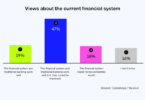The Asian Development Bank (ADB) conducted a blockchain proof of concept to enable the cross border settlement of bond transactions, concluding that the technology is fit for purpose. The Project Tridecagon trial was part of a goal to support delivery versus payment for cross border bond transactions across the ASEAN+3 region, where the ‘+3’ represents China, Japan and Korea.
The conclusion was that if regulations were adapted to support blockchain, there would be cost and time savings. However, the project insisted on compliance with current laws leading to a different cost outcome.
The problem the ADB is trying to solve
While delivery versus payment (DvP) for securities settlement is the practice in most of the jurisdictions domestically, it isn’t for cross border bond trades, which settle in two days (T+2). Funds are sent via the correspondent banking network, and the delay creates significant risk.
Project Tridecagon split the transaction into two legs. One is a foreign exchange transaction (payment versus payment or PvP), and a domestic one for security settlement. The idea was for central banks to mint currency tokens and central securities depositories (CSDs) of each jurisdiction to mint securities tokens.
The project was both very ambitious and also highly restrictive. For example, it involved interconnecting three different blockchain technologies and four vendors: ConsenSys, Fujitsu, Soramitsu and R3.
Key assumption: no legal changes
The most restrictive assumption was that no regulations had been adapted, and all the current intermediaries were still involved. This meant that DLT transactions did not legally represent a change of ownership and there was a need to provide status messages for legacy systems.
Given this restriction, the ADB noted that settlement is not considered a distinct activity in DLT because it is incidental to an atomic swap in which a cash token is exchanged for a security token. “Carving out settlement and the activities in the post-trade arena that define it took some time,” says the report.
On the plus side, the ADB concluded that the technology is fit for purpose. And future upgrades will likely be easier using blockchain smart contracts than legacy systems.
One of the questions is whether DLT would save money. The ADB recognizes that if blockchain is used as its designers intended and with supportive legislation, it could enable cost savings. But it concluded that with the restrictions it imposed, the cost would be comparable with legacy systems.
“A replication of established functional processes in DLT/BC appears possible, but the potential resulting limitation of DLT/BC functionality may not be cost-effective in the long term,” it says.
Meanwhile, the three blockchains involved were Corda, Hyperleder Besu (Ethereum) and Hyperlerder Iroha. Fujitsu deployed its ConnectionChain solution based on Hyperledger Cacti to integrate the three DLTs.






